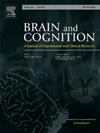Advanced disconnectomic analyses reveal repetition pathways in a case of mixed transcortical aphasia
IF 1.4
3区 心理学
Q3 NEUROSCIENCES
引用次数: 0
Abstract
Mixed Transcortical Aphasia (MTA) is an infrequent aphasic syndrome, characterized by poor comprehension and production in oral language abilities and poor performance in written language abilities. However, individuals with MTA typically retain the ability to repeat. Our patient, a woman who suffered from a left hemisphere ischemic stroke involving perisylvian areas, presented with repetition preserved for words, non-words, sentences and numbers, together with marginally preserved reading abilities. Given the peculiarity of her linguistic profile, we employed recently developed lesion-based approaches for probabilistic estimation of white matter disconnections to reveal which white matter tracts are likely to be related to her preserved linguistic abilities. Our analysis revealed that while the left arcuate fasciculus (AF)—a tract commonly associated with repetition—was partially affected, its posterior and long branches were estimated to be disconnected, whereas the anterior branch remained intact. This disconnection pattern may explain the pattern of preserved repetition abilities observed in this MTA patient.
先进的断连分析揭示重复途径的情况下,混合性跨皮质失语症。
混合性跨皮层失语症(MTA)是一种罕见的失语症,以口头语言理解和产生能力差和书面语言能力表现不佳为特征。然而,患有MTA的人通常保留重复的能力。我们的病人是一名女性,她患有左半球缺血性中风,涉及到perisylvian区,她表现出对单词、非单词、句子和数字的重复保留,以及轻微保留的阅读能力。鉴于她的语言特征,我们采用了最近开发的基于病变的方法来对白质断开进行概率估计,以揭示哪些白质束可能与她保留的语言能力有关。我们的分析显示,虽然左弓状束(AF)-通常与重复相关的束-部分受到影响,但其后支和长支估计已断开,而前支则保持完整。这种断开模式可以解释在MTA患者中观察到的保留重复能力模式。
本文章由计算机程序翻译,如有差异,请以英文原文为准。
求助全文
约1分钟内获得全文
求助全文
来源期刊

Brain and Cognition
医学-神经科学
CiteScore
4.60
自引率
0.00%
发文量
46
审稿时长
6 months
期刊介绍:
Brain and Cognition is a forum for the integration of the neurosciences and cognitive sciences. B&C publishes peer-reviewed research articles, theoretical papers, case histories that address important theoretical issues, and historical articles into the interaction between cognitive function and brain processes. The focus is on rigorous studies of an empirical or theoretical nature and which make an original contribution to our knowledge about the involvement of the nervous system in cognition. Coverage includes, but is not limited to memory, learning, emotion, perception, movement, music or praxis in relationship to brain structure or function. Published articles will typically address issues relating some aspect of cognitive function to its neurological substrates with clear theoretical import, formulating new hypotheses or refuting previously established hypotheses. Clinical papers are welcome if they raise issues of theoretical importance or concern and shed light on the interaction between brain function and cognitive function. We welcome review articles that clearly contribute a new perspective or integration, beyond summarizing the literature in the field; authors of review articles should make explicit where the contribution lies. We also welcome proposals for special issues on aspects of the relation between cognition and the structure and function of the nervous system. Such proposals can be made directly to the Editor-in-Chief from individuals interested in being guest editors for such collections.
 求助内容:
求助内容: 应助结果提醒方式:
应助结果提醒方式:


